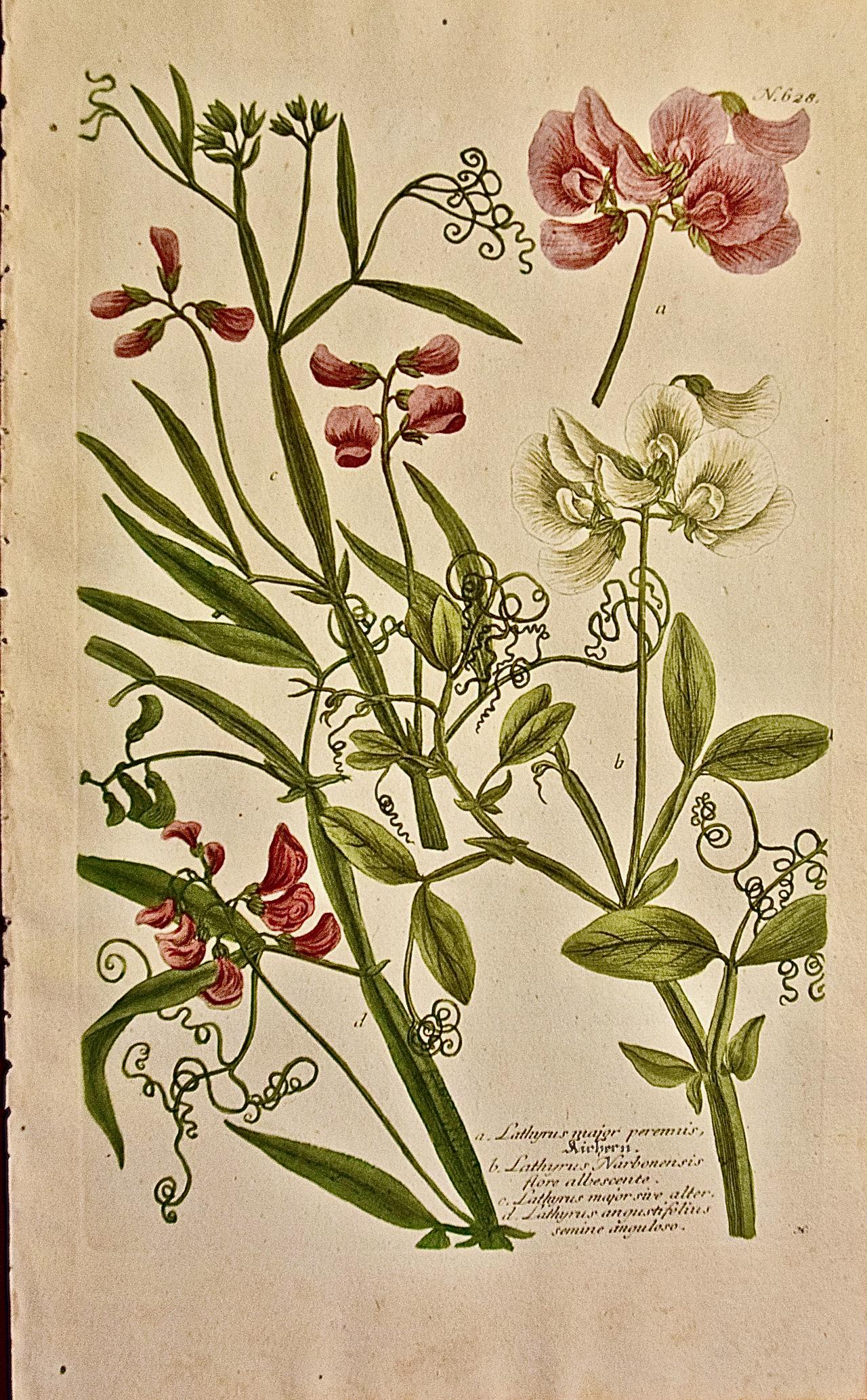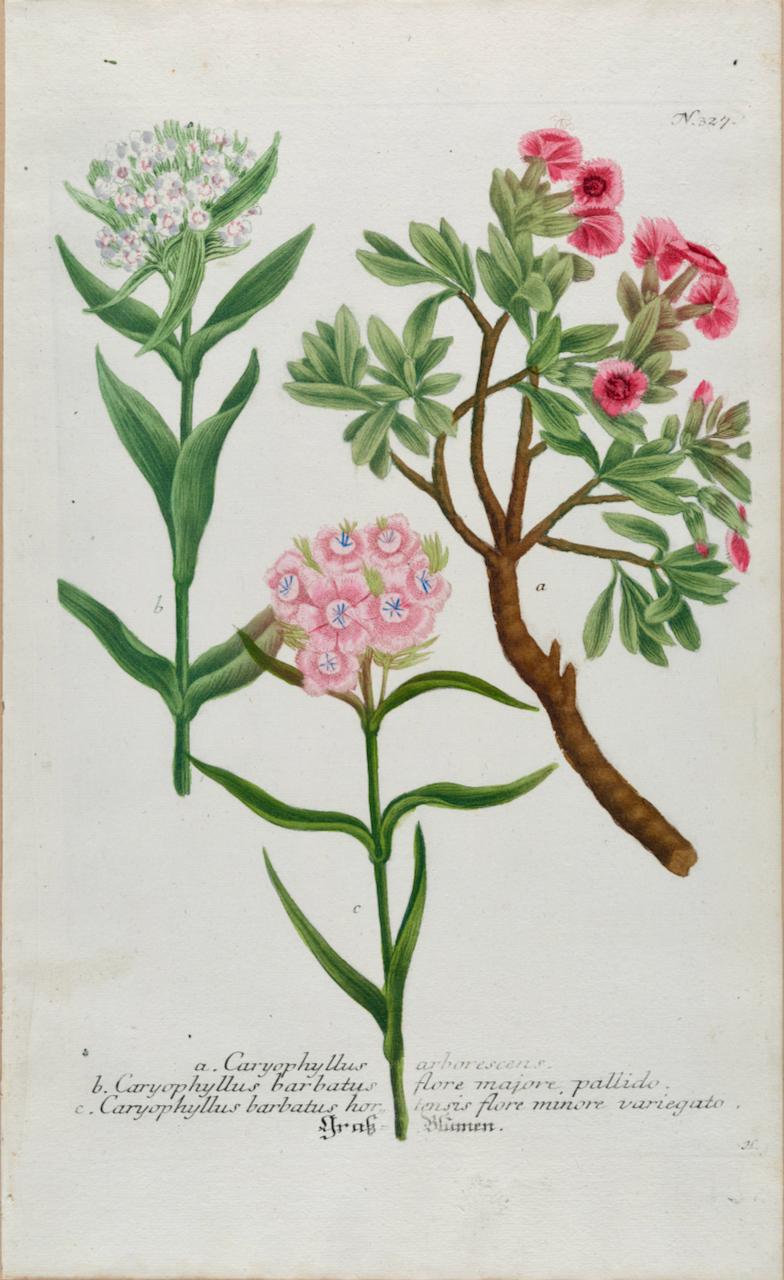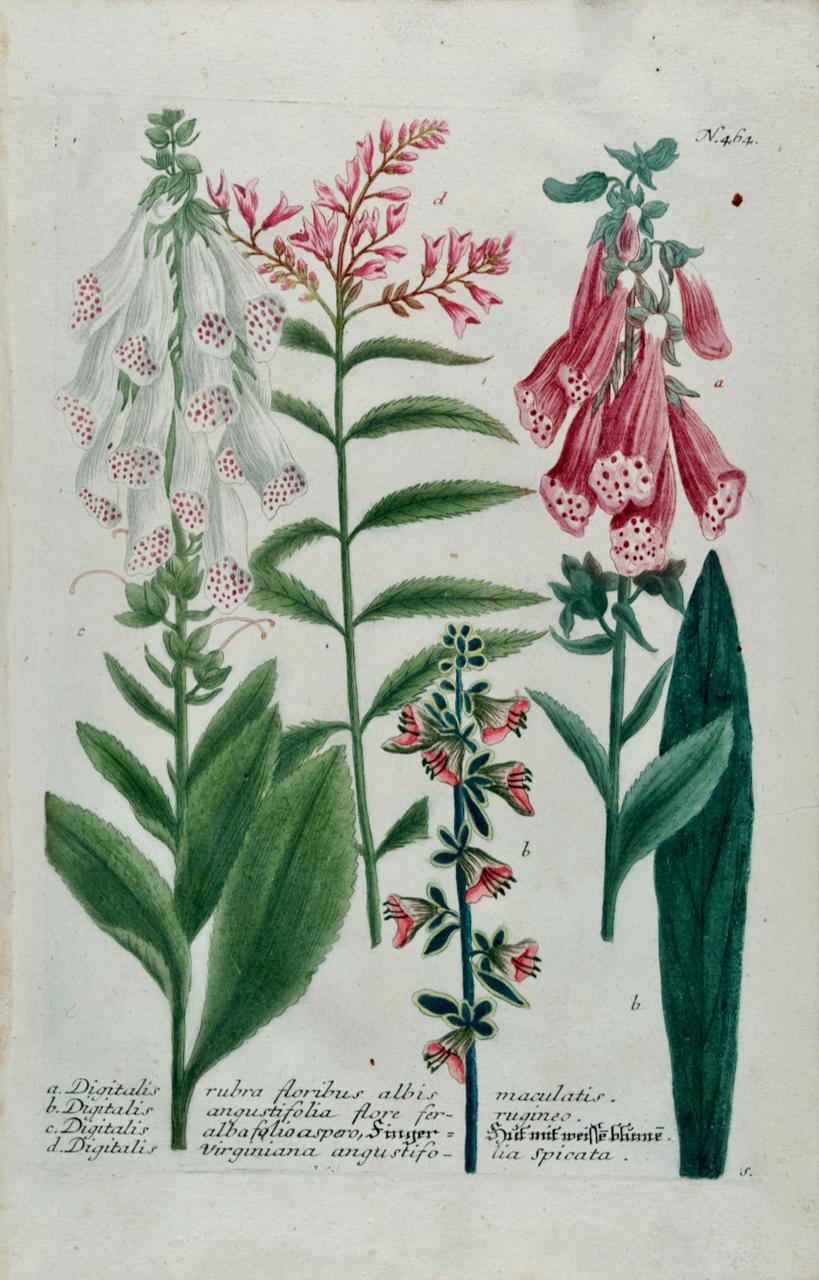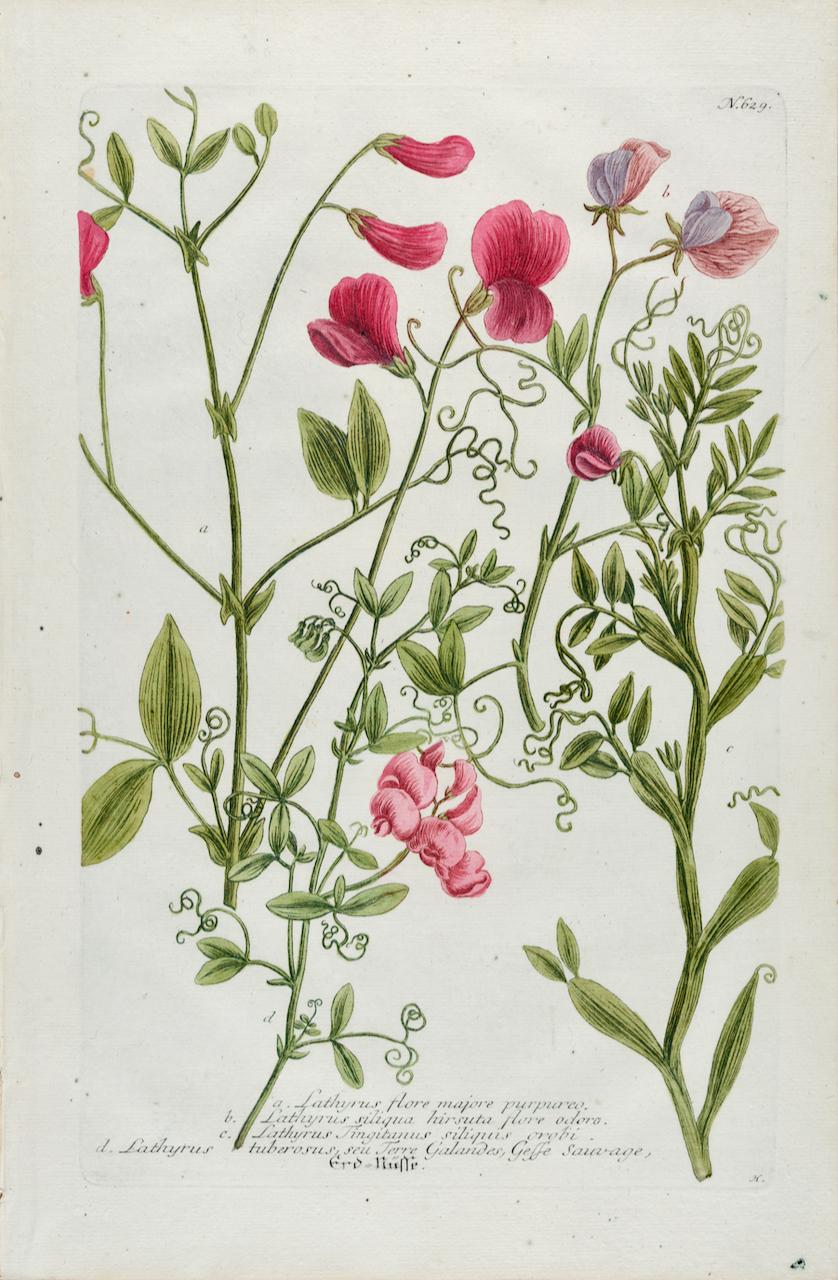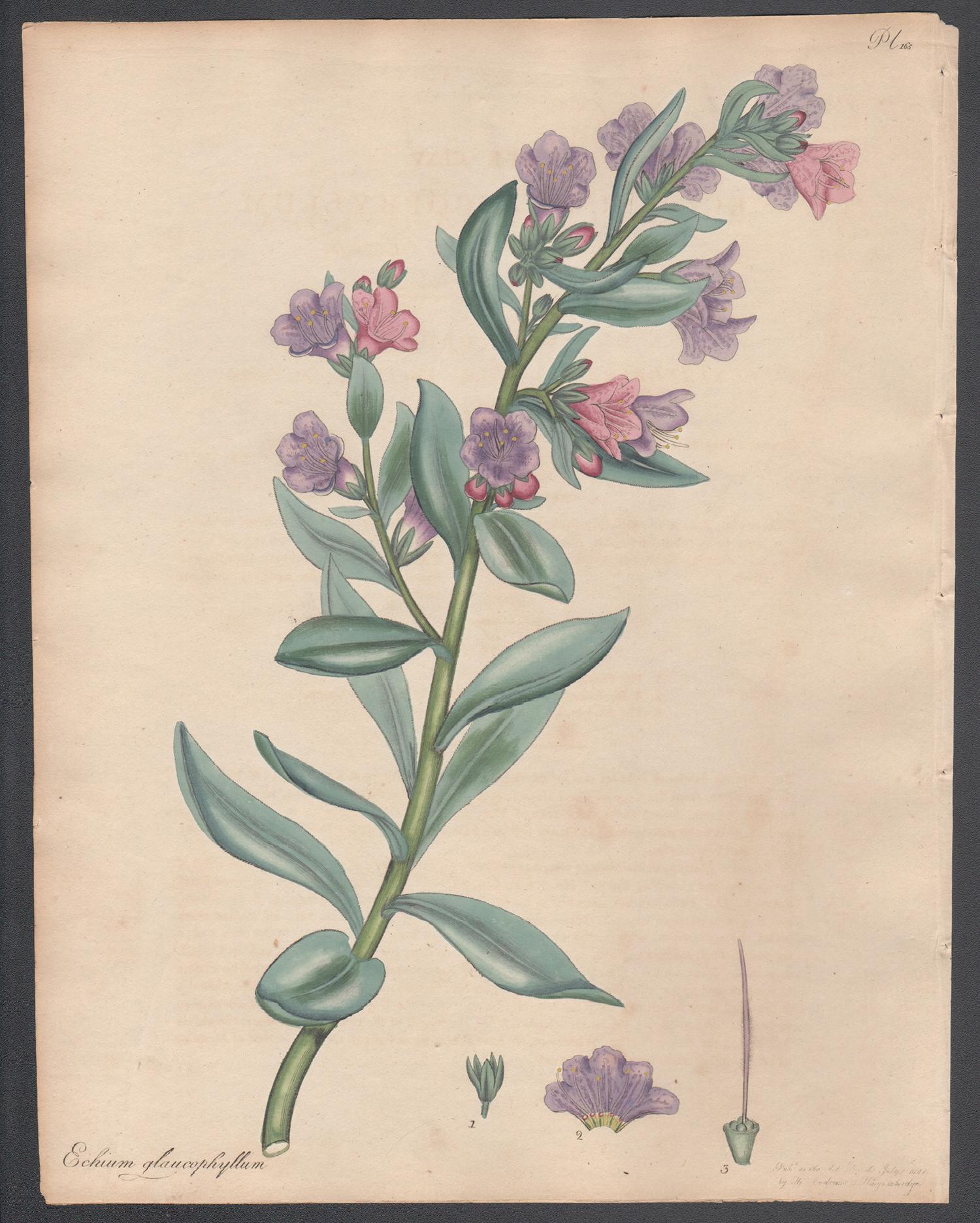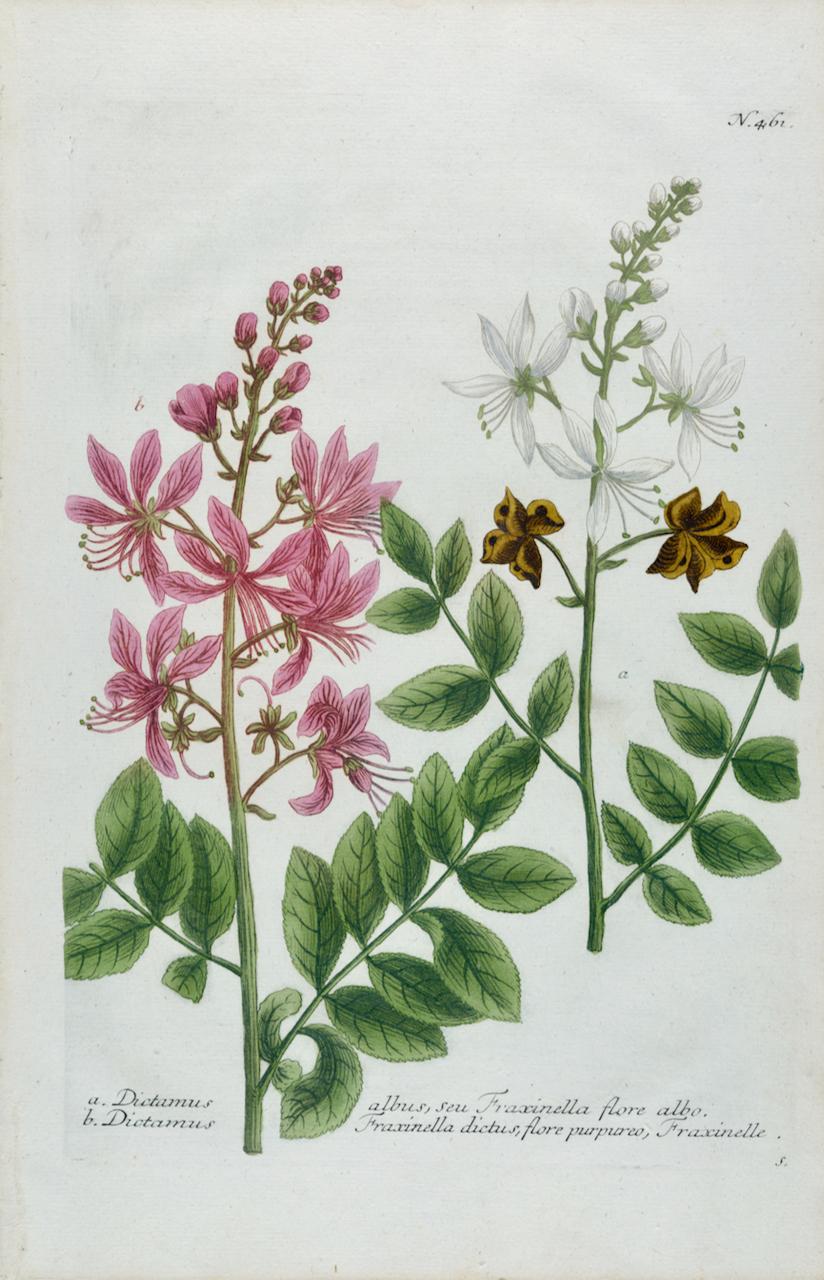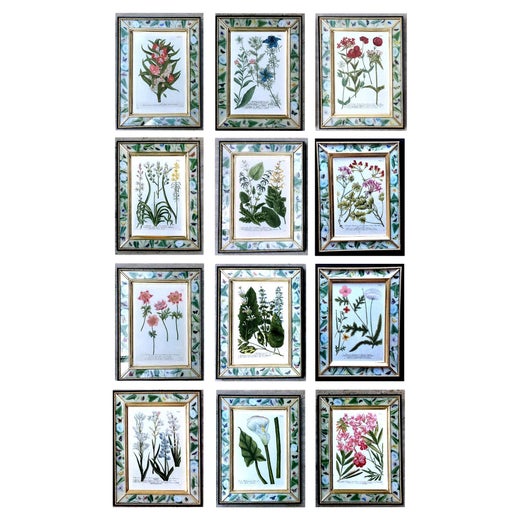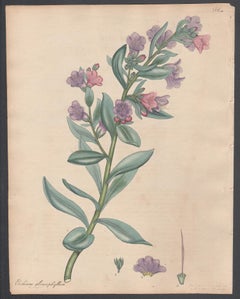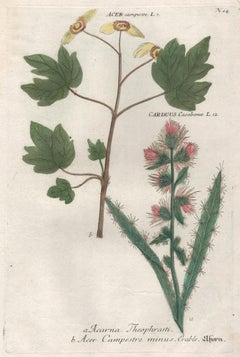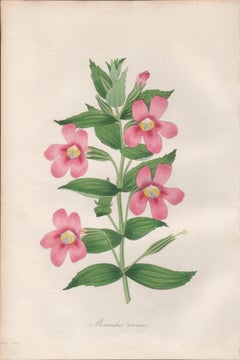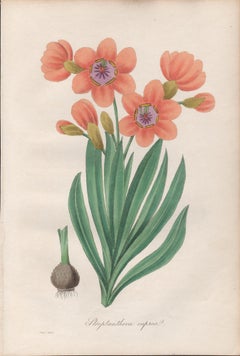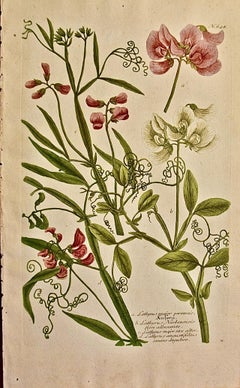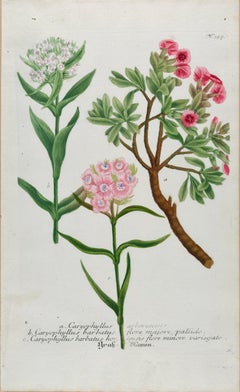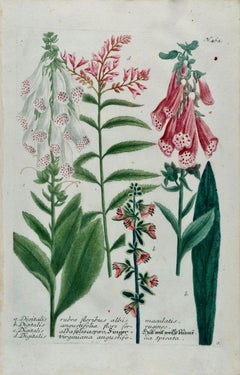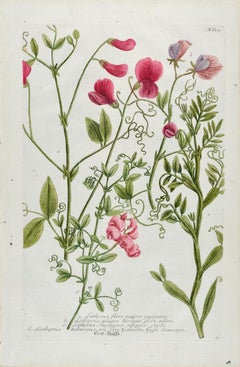Items Similar to Antirrhinum Orontium - 18th century Weinmann botanical plant flower engraving
Want more images or videos?
Request additional images or videos from the seller
1 of 3
Johann Wilhelm WeinmannAntirrhinum Orontium - 18th century Weinmann botanical plant flower engraving1740
1740
$240
£183.43
€211.42
CA$343.73
A$376.71
CHF 196.73
MX$4,520.13
NOK 2,470.24
SEK 2,326.88
DKK 1,578.76
About the Item
'Antirrhinum Orontium'
Mezzotint printed in colours. Circa 1740.
From Johann W Weinmann's Phytanthoza Iconographia, published in Regensburg 1737-45. The first botanical series to utilise colour-printed mezzotint successfully. Weinmann (1683-1741) was a Regensburg apothecary who organized the publication.
330mm by 215mm (platemark)
390mm by 245mm (sheet)
- Creator:Johann Wilhelm Weinmann (1683 - 1741, German)
- Creation Year:1740
- Dimensions:Height: 15.36 in (39 cm)Width: 9.65 in (24.5 cm)
- Medium:
- Movement & Style:
- Period:
- Condition:Excellent original colour. A couple of tiny faults.
- Gallery Location:Melbourne, AU
- Reference Number:1stDibs: LU124427271092
Johann Wilhelm Weinmann
Johann Wilhelm Weinmann (1683-1741) was a botanist, pharmacist and academic scholar who directed a famous pharmacy in Regensburg. The "Phytanthoza Iconographia" was his masterpiece; a huge work in eight folio volumes, which provided one of the most comprehensive botanical references of the eighteenth century. It has been described as a "pioneering work of botanical prints” and it remains today one of the most ambitious works ever undertaken, displaying over 4,000 species. The artist for much of the work was the gifted and very collectible Georg Dionysius Ehret (1708-1770). Born into a humble family in Heidelberg, Germany, Ehret was taught to draw by his father at an early age. As a young man, he worked as a gardener, first for the Elector of Heidelberg and then the Margrave of Badaen-Durlac. He became a well respected botanist and entomologist and one of the most influential European botanical artists of all time.
About the Seller
5.0
Platinum Seller
Premium sellers with a 4.7+ rating and 24-hour response times
Established in 2005
1stDibs seller since 2019
616 sales on 1stDibs
Typical response time: <1 hour
- ShippingRetrieving quote...Shipping from: Melbourne, Australia
- Return Policy
Authenticity Guarantee
In the unlikely event there’s an issue with an item’s authenticity, contact us within 1 year for a full refund. DetailsMoney-Back Guarantee
If your item is not as described, is damaged in transit, or does not arrive, contact us within 7 days for a full refund. Details24-Hour Cancellation
You have a 24-hour grace period in which to reconsider your purchase, with no questions asked.Vetted Professional Sellers
Our world-class sellers must adhere to strict standards for service and quality, maintaining the integrity of our listings.Price-Match Guarantee
If you find that a seller listed the same item for a lower price elsewhere, we’ll match it.Trusted Global Delivery
Our best-in-class carrier network provides specialized shipping options worldwide, including custom delivery.More From This Seller
View AllEchium Glaucophyllum, Henry Andrews antique botanical flower engraving print
By Henry C Andrews
Located in Melbourne, Victoria
'Echium Glaucophyllum - Sea-green-leaved Viper's Bugloss'
Native of Cape of Good Hope, South Africa.
Original copper-line engraving with original hand-colouring from Henry Andrews...
Category
Early 19th Century Naturalistic Still-life Prints
Materials
Engraving
Acer & Carduus - 18th century Weinmann botanical plant flower engraving
By Johann Wilhelm Weinmann
Located in Melbourne, Victoria
'Acarna Theophrasti' and 'Acer Campestre minus'
Mezzotint printed in colours. Circa 1740.
From Johann W Weinmann's Phytanthoza Iconographia, published in Regensburg 1737-45. The fi...
Category
18th Century Naturalistic Still-life Prints
Materials
Engraving
Mimulus roseus, antique botanical pink flower engraving
Located in Melbourne, Victoria
Engraving with original hand-colouring. 1834. 230mm by 155mm. From Paxton's 'Magazine of botany and register of flowering plants' by Sir Joseph Paxton.
Category
Mid-19th Century Naturalistic More Prints
Materials
Engraving
Streptanthera cuprea, antique botanical flower engraving
Located in Melbourne, Victoria
Engraving with original hand-colouring. 1834. 230mm by 155mm. From Paxton's 'Magazine of botany and register of flowering plants' by Sir Joseph Paxton.
Category
Mid-19th Century Naturalistic More Prints
Materials
Engraving
Prickly Viper's Bugloss Henry Andrews antique botanical flower Echium engraving
By Henry C Andrews
Located in Melbourne, Victoria
'Echium Ferocissimum - Prickly Viper's Bugloss'
Native of Cape of Good Hope, South Africa.
Original copper-line engraving with original hand-colouring from Henry Andrews' 'The Bot...
Category
Early 19th Century Naturalistic Still-life Prints
Materials
Engraving
Chinese Scrub (Cassinia arcuata), antique botanical lithograph
Located in Melbourne, Victoria
'Chinese Scrub (Cassinia arcuata, Rob. Brown)
Colour lithograph, 1909.
Category
Early 20th Century Naturalistic More Prints
Materials
Lithograph
You May Also Like
Flowering Pea Plant: An 18th C. Hand-colored Botanical Engraving by J. Weinmann
By Johann Wilhelm Weinmann
Located in Alamo, CA
This hand-colored botanical mezzotint and line engraving by Johann Wilhelm Weinmann (1683-1741) is entitled "A. Lathyrus Major Peremis Richern B. Lathyrus Narbonensis Flore Albescen...
Category
Mid-18th Century Naturalistic Still-life Prints
Materials
Engraving, Mezzotint
Flowering Sweet William Plant: 18th C. Hand-colored Weinmann Botanical Engraving
By Johann Wilhelm Weinmann
Located in Alamo, CA
This hand-colored botanical mezzotint and line engraving by Johann Wilhelm Weinmann (1683-1741) is entitled "a. Caryophyllus Arborescens, b. Caryophyllus Barbatus". It is plate 327 i...
Category
Mid-18th Century Naturalistic Still-life Prints
Materials
Engraving, Mezzotint
Flowering Digitalis Plant: 18th C. Hand-colored Botanical Engraving by Weinmann
By Johann Wilhelm Weinmann
Located in Alamo, CA
This hand-colored botanical mezzotint and line engraving by Johann Wilhelm Weinmann (1683-1741) is entitled "Digitalis rubra floribus albis maculatis. Digitalis angustifolia flore fe...
Category
Mid-18th Century Naturalistic Still-life Prints
Materials
Engraving, Mezzotint
Flowering Sweet Pea: 18th Century Hand-colored Botanical Engraving by Weinmann
By Johann Wilhelm Weinmann
Located in Alamo, CA
This is an original antique colored botanical mezzotint and line engraving of flowering Red Sweet Peas which is finished with hand-coloring. It is entitled "Lathyrus Flore Majore Pur...
Category
Mid-18th Century Naturalistic Still-life Prints
Materials
Engraving, Mezzotint
Flowering Burning Bush: 18th Century Hand-colored Weinmann Botanical Engraving
By Johann Wilhelm Weinmann
Located in Alamo, CA
This is an original antique colored botanical mezzotint and line engraving of flowering Gas Plants or Burning Bush and Fraxinella, which is finished with hand-coloring. It is entitle...
Category
Mid-18th Century Naturalistic Still-life Prints
Materials
Engraving, Mezzotint
Flowering Cotton Plant: 18th Century Hand-colored Weinmann Botanical Engraving
By Johann Wilhelm Weinmann
Located in Alamo, CA
This striking hand-colored botanical mezzotint and line engraving is entitled "Gnaphalium, Gossypium (Cotton Plant)". It is plate 551 in Johann Weinmann's monumental publication "Phy...
Category
Mid-18th Century Naturalistic Still-life Prints
Materials
Engraving, Mezzotint
More Ways To Browse
18th Century Botanicals
18th Century Botanical Prints
Used Blimps
Used Dog Sleds
Vampire Art
Vanguard Oil Paintings
Vintage Bed Sheets
Vintage Running Posters
William Morris Art
Wood Cube Sculpture
1880 Large Oil Paintings
Abstract Reclining Sculpture
Agustin Cardenas
Anne De Villemejane
Astronaut Sculpture
Bamboo Pen
Bill Hemmerling
Blue Dog Original
